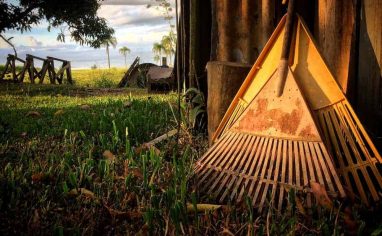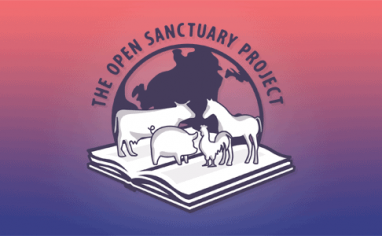
Subscribe To The Open Sanctuary Podcast
If you’d like to get the latest episodes of The Open Sanctuary Podcast, you can subscribe for free on all Podcast platforms, including Apple Podcasts and Spotify!
Episode Notes
Executive DirectorThe individual formally in charge of final decision making at an organization, who sometimes works closely with the organization’s Board of Directors. Sometimes a Founder is an Executive Director, especially early in a nonprofit’s growth stages. Mckenzee and NonprofitA non-governmental organization whose primary purpose is something other than selling goods or services. Specialist Julia discuss different staff positions that may benefit operations at your animal sanctuary. Assigning sanctuary tasks to appropriately skilled staff can help maximize your efficiency and effectiveness as an organization, which is very helpful for long-term sustainability! Listen on to learn more about the various roles and responsibilities you can allocate at your sanctuary!
—
This Episode’s Referenced Open Sanctuary Project Resources:
- Overview Of Animal Sanctuary Staff Positions | The Open Sanctuary Project
- Recognizing And Managing Compassion FatigueA form of Secondary Traumatic Stress Disorder that can affect anyone serving individuals who have experienced or are currently experiencing trauma. At Your Animal Sanctuary | The Open Sanctuary Project
- Recognizing And Preventing BurnoutA physical and emotion reaction to prolonged, unmanaged workplace stress. At Your Animal Sanctuary | The Open Sanctuary Project
- A Founder’s Guide To Organizational Change At Animal Sanctuaries | The Open Sanctuary Project
- Board Resources | The Open Sanctuary Project
- A Guide To Effective Tabling For Animal Sanctuaries | The Open Sanctuary Project
Episode Transcript (Auto-GeneratedThe following content was transcribed through an automated process and may contain transcription errors or misspellings.)
Julia Magnus: Welcome to another episode of the Open Sanctuary Podcast. I’m Julia, the nonprofit specialist, and I’m talking with my friend and executive director Mckenzee Griffler. If you are a regular listener to this podcast, you probably know that one thing we talk about a lot is sanctuary capacity because we truly believe that it is one of the considerations that sanctuaries should prioritize very highly. With that said, one thing that can really contribute to your capacity and your organization’s long-term sustainability is having dedicated staff members to help your sanctuary operate efficiently and thrive well into the future. We have a full resource on the subject of sanctuary staff positions, which will be listed top in our show notes, and we figured today would be a great day to run through them in the podcast. So, let’s dive into this topic. As an opening question, let’s talk about why we felt it was important to create this resource and do a podcast on the subject.
Mckenzee Griffler: So many folks who decide that they want to get started in rescue and sanctuary work are often very focused, understandably, on direct care, and many may not have a background in governance or how to build an organization from scratch and how to even get a staff. So, when just getting started, most animal sanctuaries or rescues tend to have a very highly limited pool of personnel wearing a lot of hats to accomplish what the sanctuary and organization needs to get done in the course of a day. And as we all know, that’s just a list that grows and grows and grows. In fact, it’s quite common for founders to personally have a hand in nearly every single role outlined in this podcast episode to some extent. For many sanctuaries, if they stay rather small or maintain a resident population which is manageable solely by the founderSomeone who starts an organization. A Founder may or may not also be the Executive Director of an organization., this model of limited roles might remain the same throughout the entire life cycle of the organization due to budget, choice, philosophy, values, etc. However, for sanctuaries that do choose to grow out their population, grow out their acreage, and as a result end up supporting many residents and programs, this level of involvement can quickly become completely unsustainable for one or two individuals and a group of volunteers to maintain in the long run. This feels really important to emphasize because, as we know, rescue and sanctuary work are really super hard, and if a limited number of individuals and volunteers are caring too much, there are actually significant risks associated with that. First of all, those individuals can begin to suffer from compassion fatigue and burnout. As you said, this work is extremely difficult, and compassion fatigue and burnout are very real occupational risks. We have resources on both of these subjects that we will list in the show notes. And it’s also worth mentioning here that there is another, maybe less discussed, occupational risk that can impact folk who start this work, which is what we often refer to as founder’s syndrome. This can manifest in a lot of ways, but in short, its “symptoms” are basically difficulties adjusting to organizational change over time. It is completely a natural thing that can happen when an organization is founded by passionate individuals, but it can be harmful to both the individuals involved in the organization and the organization itself. I also want to mention that we have a great guide to help founders manage organizational change which we are also listing in the show notes. Our hope in sharing information about different sanctuary staff positions, both in the resource and on this podcast, is that we can help sanctuary operators and caregivers, and yes, even founders, avoid and or mitigate all of the risks.
Julia Magnus: So, as you mentioned, there are a ton of different hats available at a sanctuary for an individual to wear, and it can be super helpful to allocate specific responsibilities to certain positions at a sanctuary. So, why don’t we start running through some of the roles that you could have at a sanctuary? And maybe let’s start with a role that you just mentioned, which is that of the founder.
Mckenzee Griffler: Absolutely. The founder, or sometimes co-founders, of an animal sanctuary or rescue is the individual or persons who dream up and launch the sanctuary. And as we know, sanctuaries can be created for a lot of reasons, especially due to seeing a situation in your community or recognizing the need for it. Or maybe it’s just been a dream to get involved in rescue at this scale for a long time and someone wants to get involved. But it is important to note that the term founder does not have a legal basis. A founder is not necessarily the executive director of an organization, although in most occasions, a founder is also the executive director when an organization is just getting started. Nor is a founder necessarily a voting board member. They’re just the person who got everything started. Those who found animal sanctuaries must be mindful that if they’re making decisions for the organization, they should be prepared to eventually depart from that decision-making role, both from a pragmatic standpoint—we can’t be around forever—but also from the standpoint of avoiding the risks associated with founder’s syndrome.
Julia Magnus: Absolutely. It’s always good to get fresh new lenses in that capacity, get new ideas, and it can really help an organization flourish, grow, evolve over time. So, moving down the list of roles, let’s talk about the senior manager role at a sanctuary, which may or may not, as you mentioned, be a founder at some point in time. So why don’t you tell me a little bit more about this role?
Mckenzee Griffler: So a senior manager might have a lot of different names depending on the organization in question. A lot of nonprofit organizations use the term executive director. Some organizations use president or chief executive officer, CEO. But we’re talking about the senior manager at the very top of the decision-making process for a sanctuary. You’ll see that the differences in names between different organizations’ senior managers is not necessarily grounded in any functional difference, but one due to perception. Many nonprofit organizations prefer the term executive director due to other terms having more of a for-profit business connotation and less of a warm perception. As nonprofitsNon-governmental organizations whose primary purpose is something other than selling goods or services. grow in scope and organizational capacity and complexity, it is more typical for many to give the top spot the name president or CEO in order to create a perception of a more formal organization or clarity as to who makes final decisions. Although, of course, there are many very large sanctuaries that always use the term executive director. It’s purely an individualized organizational decision. Ultimately, in most cases, like we said, the founder of a sanctuary is also the executive director for a number of years getting started. But functionally what this role is doing, the executive director is working closely with both the board and everybody in the sanctuary’s leadership to make decisions that will help the organization most effectively carry out its missionThe stated goals and activities of an organization. An animal sanctuary’s mission is commonly focused on objectives such as animal rescue and public advocacy. and grow sustainably. Very often the executive director is also the public face of the sanctuary if the organization staff is limited. And something that I’ve learned as an executive director is if you’re a smaller organization, much like the Open Sanctuary Project is, if you don’t have a staff member or a volunteer to do something or a board member to help out with something, a lot of the times it’s on the executive director to figure out how those things get done. So, it’s a role with a lot of responsibility, and it’s important to always think about who’s taking on that role, how long do they wish to be in that role, and what does that role need to continually evolve to look like in order to most effectively serve the organization, serve the residents of the sanctuary or rescue, best manage the staff, the volunteers, give the best experience to the visitors. There’s a lot wrapped up in the executive director role.
Julia Magnus: Yeah. A lot of adaptability necessary because I have seen you become the tech wizard, the thank you person for all our generous donors. So many things that you have just taken on because there’s no one designated to do it or you’ve had to also figure out how to delegate that to other folks. So, yeah, a very important role. Next on our list of possible staff positions, and in my mind, in a sanctuary context, it’s arguably the most important one, we’ve got the caregiverSomeone who provides daily care, specifically for animal residents at an animal sanctuary, shelter, or rescue.. Can we talk a little bit about caregivers?
Mckenzee Griffler: Caregivers are a vital component of many animal sanctuaries. These staff members are dedicated to the daily care of residents, ranging from daily feeding, living spaceThe indoor or outdoor area where an animal resident lives, eats, and rests. cleaning, health checks and documentation for residents, providing basic health care and medication regimens as necessary, obviously under the supervision of veterinary instruction, sometimes depending on that health care, coordinating that veterinary care, advocating for residents who are in need of help to decision makers at the organization. Really, in some ways, just being the person who speaks up on behalf of residents. Sanctuaries might divide caregiving responsibilities by species, by resident populations, by different living areas, or by the caregivers’ skill level. For many sanctuaries, a full-time caregiver is one of the first major hires that they’ll make in order for a founder to have more time to handle other organizational needs and get a breather from the daily realities of sanctuary operation. Often times, a sanctuary will hire at least one caregiver to live at or very near the sanctuary in order to be on call for overnight safety. There’s a lot of stuff involved in that and that is very jurisdictionally contextual and that’s probably the source of a huge resource in another podcast episode. But because a caregiver typically works with a resident much more often than other staff members, sanctuary management should really highly consider deferring to the expertise of care staff when it comes to major health and life decisions for residents. As we’ve discussed earlier, caregivers tend to experience many emotional challenges due to the inherent closeness of their position to the residents without a lot of relief or time to process their emotions, especially during end of life situations or medical emergencies. It’s important that a sanctuary be aware of these very real challenges of compassion fatigue and burnout. And I do want to mention that we have another resource for you listed in the show notes which has to do with care staff retention and ways that you can support your caregivers so that they stick around and help support the organization as long as they reasonably can. In that resource, among the many ways that you can support caregivers is by providing them with good leadership. So that kind of brings us to our next role. Can you talk a little bit about the potential role of a shelter manager?
Mckenzee Griffler: Different sanctuaries have different leadership configurations. But a very common role at larger sanctuaries is the shelter manager, sometimes known as the shelter director, sometimes a lot of different names for similar roles. But this person is typically in charge of all operations related to the care of the residents and has a strong decision-making role in ensuring that all those who are cared for are cared for to the best extent possible. The shelter manager might directly oversee all caregivers as well as provide guidance for how the living spaces and facilities are developed and maintained. A shelter manager must also be highly knowledgeable in resident care, sanctuary operations, the individuals in their care, and have a strong leadership capacity in order to be able to delegate effectively in stressful times and when things need to be shuffled around.
Julia Magnus: So, yeah, in addition to having residents to care for, that’s not the only thing sanctuaries have to look out for. They often have quite a lot of infrastructure to manage buildings, all kinds of things. So, can you tell us a bit about a role that could come in handy with managing infrastructure and all the considerations that accompany it?
Mckenzee Griffler: This is where having a facilities manager, although in the case of smaller sanctuaries, it might be a dedicated caretaker for the property, who can help ensure the physical environment of the sanctuary, the structures, the living spaces, the fencing, all of that good stuff is always well tended to, in good repair, and aesthetically pleasing. It can be really valuable to have somebody whose sole responsibility is to ensure that the living spaces and pastures are safe for residents, that all of the essential functions of the sanctuary are operating as efficiently as possible, and nothing is going to go unnoticed that could potentially harmThe infliction of mental, emotional, and/or physical pain, suffering, or loss. Harm can occur intentionally or unintentionally and directly or indirectly. Someone can intentionally cause direct harm (e.g., punitively cutting a sheep's skin while shearing them) or unintentionally cause direct harm (e.g., your hand slips while shearing a sheep, causing an accidental wound on their skin). Likewise, someone can intentionally cause indirect harm (e.g., selling socks made from a sanctuary resident's wool and encouraging folks who purchase them to buy more products made from the wool of farmed sheep) or unintentionally cause indirect harm (e.g., selling socks made from a sanctuary resident's wool, which inadvertently perpetuates the idea that it is ok to commodify sheep for their wool). anyone at the sanctuary. This role can be really important to protect residents from fire risk, from foreign body ingestion, and to protect humans by staying on top of OSHAThe United States Occupational Safety And Health Administration, a government department that ensures workplace safety, or the Occupational Safety And Health Act, the law that governs workplace safety. requirements and advocating for safety in all aspects of the property. And really, I have to underscore having someone whose job is just the infrastructure, who’s just looking out for those details, and they don’t have to also be paying attention to the residents, visitors, all of that stuff can make a world of difference, especially when you’re starting to look at larger sanctuary properties.
Julia Magnus: Absolutely. So, we’ve been talking about staff, but we also know that sanctuaries both welcome and rely heavily on volunteer support. And as we’ve talked about in resources and podcasts we’ve done on capacity, even if you’re adding capacity with volunteers, there is a certain amount of capacity that’s required to manage them. So, could you tell us about a role that might be helpful in managing all of those logistics?
Mckenzee Griffler: So, if a sanctuary is relying heavily on the public in order to assist with daily tasks and events, and some sanctuaries can have dozens of regular volunteers, having a dedicated volunteer manager can be really important for identifying needs that can be fulfilled by public volunteers, ensuring communications to volunteers are carried out clearly and efficiently, making sure that volunteer opportunities are presented and filed promptly in an organized fashion. And that might not just be regular volunteers. It might also be seeking out work groups. It might be looking for additional support from all sorts of parts of the community. And I’d say another important thing is that a volunteer manager also should be maintaining critical community relationships. One of the most important things a volunteer manager does is they are the sanctuary’s communicator with their volunteer pool. And so, not only is that making sure the program is run, that positions are filled, that people are getting the training that they need, it also means that you’re communicating gratitude to your volunteers and finding ways to thank them and show appreciation and even doing things like host volunteer social events to make sure that the volunteers really feel like a community, especially at organizations where there might not be a lot of overlap between volunteer shifts. Yes, I would say this is not necessarily the easiest role. You need to be somebody who’s really good at working with a lot of different kinds of personalities who might have completely different reasons for what they’re getting out of volunteering for a sanctuary, but it can be extremely valuable for retaining a strong and passionate volunteer base.
Julia Magnus: I imagine that you’d have to be a people person. So, with respect to people, part of many sanctuaries’ missions is to do outreachAn activity or campaign to share information with the public or a specific group. Typically used in reference to an organization’s efforts to share their mission., to talk to people, to do community education as part of their mission and vision, and sharing more about compassionate ways of living with animals. What’s a sanctuary role that could help with this outreach community education?
Mckenzee Griffler: So, this is where you might have a marketing or a public relations director, which can help guide sanctuary communications to achieve a consistent voice that the public can come to identify with the sanctuary. This person might be targeting and creating more opportunities for sanctuary visibility in the larger community. They might be crafting and handling press releases as big things happen in the organization and might be a critical support in the unfortunate but not uncommon event of a sanctuary dealing with a potential public relations challenge. They might also work really hand in hand with a humane educator who works with a sanctuary to make sure that all messaging is appropriate and within the voice that the sanctuary uses. But, I think as sanctuaries grow and they get a higher profile in the world, it can be really important to have somebody who helps out with this stuff, who kind of understands all of the complexities and nuances involved in public relations and speaking to a wider audience.
Julia Magnus: So, you mentioned while you were just talking about a marketing or public relations director, you also mentioned humane educators. So how could they play an important role at a sanctuary and what kind of role, what does that role look like?
Mckenzee Griffler: So if education is a strong component to a sanctuary’s mission, either in the form of tours or other educational events for the public, or even just in terms of social media and putting out posts informing the public, having a dedicated education or outreach director can be a wonderful organizational addition. This role can focus full-time on creating and refining opportunities to help visitors connect with the residents either in person or virtually and help foster more compassion for animals. They can also create and manage a sanctuary’s tour program, ensuring that an appropriate and effective message is being shared with the public at all times and target potential audiences that might be receptive to educational programming. At some sanctuaries, the outreach director is also tasked with attending events outside of the sanctuary to help spread the message of the sanctuary’s mission and goings-on with the community. And as a side note, in the show notes, we have a resource all about table-ing for this exact person or for a volunteer in this role because there are a lot of ways that that can be more successful if you follow certain guidelines. Often times, an education or outreach director will also work with outside organizations who share a similar mission in order to spread a sanctuary’s message to larger communities. So, a lot of sanctuaries really have a core mission that involves education. And so, this is a great role as your organization expands if your organization is looking to expand.
Julia Magnus: Speaking of expansion, one thing that we know is that sanctuary work, in addition to being very challenging, it’s also very costly, and expansion can definitely require a lot of resources. So what role could you create at your sanctuary in order to help out with the work of raising resources and funds to support your existing population as well as expand to help others?
Mckenzee Griffler: So this is where a development director comes in. Development directors are primarily tasked with fundraising and helping the sanctuary find sustainable revenue streams as well as maintaining relationships with major donors and seeking grants to help supplement the organization’s operating budget. The development director usually works closely with all departments to determine the sanctuary’s financial needs and calculate a realistic fundraising goal to achieve each year. That means developing an effective mix of fundraising tactics and opportunities to focus resources on. Dedicated development directors are indispensable assets to help sanctuaries work towards sustainability well into the future. It is highly recommended that prioritizing the hiring of a development director in order to maximize the chances of maintaining an annual operating budget that can withstand the unexpected costs of running a sanctuary without the need to conduct emergency fundraising to remain solvent.
Julia Magnus: So the next two roles that we want to talk about here, they might not necessarily be in-house roles with a sanctuary, but they really are important people that you should have on deck to consult with as needed. Can you tell us about those?
Mckenzee Griffler: Yes, these are the people that we always are talking about on this podcast when we say professionals in your area, in your jurisdiction, because they are really important, especially if you’re a 501(c)(3) registered nonprofit or equivalent charity in your country. Sanctuaries should all have access to an accountant, either on call for the occasional financial question, especially if you’re a legally registered nonprofit, or on staff if the organization has a complex financial picture. All 501(c)(3) registered nonprofits in the United States must submit Form 990 every year in order to maintain their status, and doing this critical task without a formal background in accounting could potentially introduce risk to an organization. All sanctuaries should also have access to an attorney or someone qualified to review any legal questions that might come up in their operation. There are so many decisions and scenarios that could potentially introduce legal risk to an organization, especially in the case of the public interacting with residents and having somebody available to review documents such as adoption contracts or liability waivers, policies, and just things to generally protect a sanctuary from risk is really important, especially as an organization grows.
Julia Magnus: Speaking of an organization growing, the more staff you have, the more need you might have to have somebody to wrangle them. So, let’s talk about HR. It may not be necessary in smaller organizations, but if you do have a lot of staff, it can be really, really helpful to have someone dedicated to them, for them.
Mckenzee Griffler: Absolutely. There’s a reason why HR people exist. A dedicated human resources director, as you’ve said, Julia, might not be on the list in the short run for a growing organization. But if you become a much larger organization, an HR director can really help maintain positive, clear communications between staff members and management. This role can be a valuable support to ensure that everybody working at the sanctuary feels heard and understood, especially in times of organizational growth or stress. And we all know that stress can hit a sanctuary very quickly.
Julia Magnus: Absolutely. So, last but not least, let’s talk about a really important role at a sanctuary and maybe an underemphasized one, and this is that of your board member. So let us know if you do want to learn more about boards. We do have a ton of resources about boards in our governance section. You can just search “board” at opensanctuary.org or take a look at our show notes where we have a link to a list of them. So do you want to tell us a little bit about boards?
Mckenzee Griffler: I would love to. A good board is a critical component of a nonprofit organization, and this is doubly true for animal sanctuaries. Sanctuary board members might come from a diverse range of backgrounds and occupations and they might even have very little direct experience with sanctuary management. The most important thing a board can provide is impartial guidance as for the best way for an executive director to lead a sanctuary in carrying out its mission. At first, it’s not unusual for a sanctuary’s boards to consist of friends and colleagues of the founder or even the founder themselves. But ultimately, a board’s most critical functions and roles are hindered if the board is merely an extension of the founder or the executive director’s opinions. So, boards, they’re volunteers. They should be some of your best volunteers. They should be people that can be honest with you about looking at the broad view of your organization. They should be people that can help rally the troops. They should be people that can help fundraise and give you a realistic financial picture. They are an incredible tool if you cultivate them in a way that you’re bringing in board members who want to be active, who want to do the work, who want to see your organization succeed. So, they should never be looked at as some contrivance or minor thing that you have to do to have a nonprofit. They are one of the most valuable tools in a nonprofit if you cultivate a good one.
Julia Magnus: Totally agree. And another thing that people often do with boards is just think, “Oh, they’re there to fundraise,” but you may have a board member who may not be the best fundraiser, but they could be an accountant or they could be a lawyer who would be willing to offer your organization advice. So, it doesn’t always have to be about the fundraising. There are a lot of different skills your board members can bring to bear at your organization to help you out. Oh, thank you, McKenzie. Thank you so much for running through all of those roles. We really do hope that this episode proves helpful to you when it comes to imagining how to organize staff roles at your animal sanctuary. We did mention a number of resources in our discussion that we’ve dropped in the show notes for your further perusal, so hopefully you go check those out. If there are more subjects that we can cover that would be useful to you, please feel free to contact us via our “contact us” page at opensanctuary.org. We’re always really happy to hear community feedback, and we really welcome suggestions for new resources. Again, we welcome your feedback, and if you found this valuable, please consider leaving us a five-star review. And if you like what we do and you would like to support our work, we warmly welcome donations. We are a 501(c)(3) organization, so your donations are tax-deductible and help us sustain our mission of providing freely accessible resources so that every sanctuary is a success story. Thanks for listening, for your support, and we really look forward to talking to you next time.

Got A Podcast Idea? Contact Us!
If you have a topic or question you’d love to hear our staff address on The Open Sanctuary Podcast, please get in touch via our contact form!






